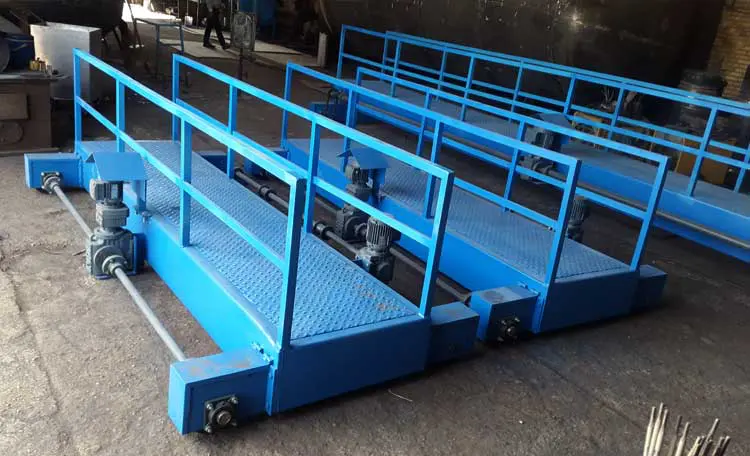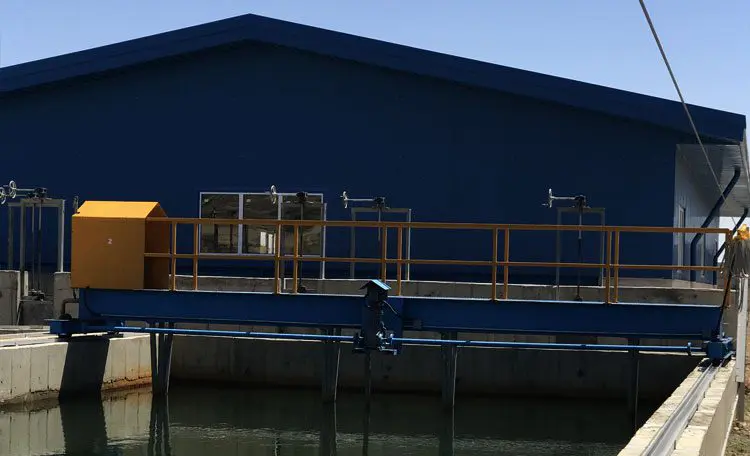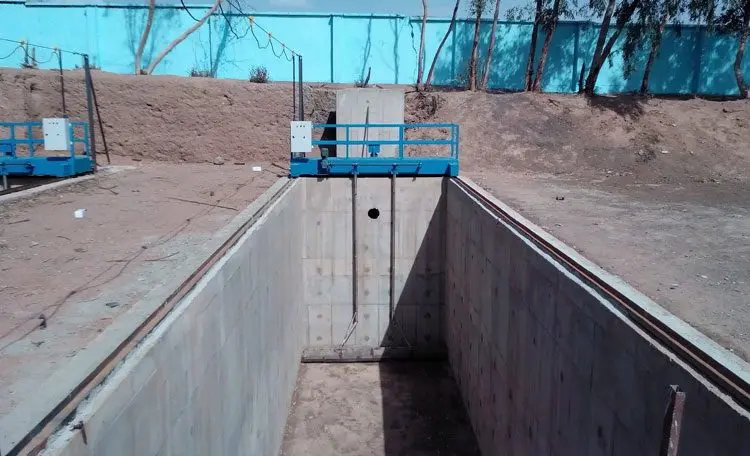The method of Reciprocating Sludge Scraper
Due to the high variety of Sludge Scraper types and to understand the differences in Reciprocating Sludge Scrapper, it is better to get acquainted with how they work. This type of Sludge Scraper is designed to be the width of rectangular pools and move in the direction of its width after installation. In other words, after installing the Reciprocating Sludge Scraper at the top of the rectangular ponds, the blade connected to the bridge moves in the direction of fluid flow at the bottom of the pond and at the same time directs the sludge layers to the bottom. The sludge collection tank is located at the bottom of the pond and after the bridge moves and the blade reaches its end, the sedimentary material is discharged from the pond.
Making Reciprocating Sludge Scrapper
As with other types of Sludge Scrapers, certain standards and principles must be considered in the design of the Reciprocating Sludge Scrapper. The most important ones are the following options:
The material used for the blades and other parts of the bridge must be carefully selected. Due to the fact that the blades are in contact with organic matter in the sewage, so they must be completely resistant to corrosion and decay. For example, the blades can be made of HDPE and for other parts such as movable tape, stainless steel bridge is a good choice. For other parts that are not in contact with organic matter, fiberglass will be a good option.
In designing all types of Sludge Scrapers, space must be allocated for the movement of human operators. As a result, the width of the bridge must be large enough for humans to enter.
The speed of the bridge should be determined according to the type of sediment, the amount of sludge layers in the pond floor and the capacity of the treatment plant.
The Sludge Scraper blade should also be designed so that it can move easily on the bottom of the pond and the unevenness of the environment does not interfere with its operation process.






Leave a Reply